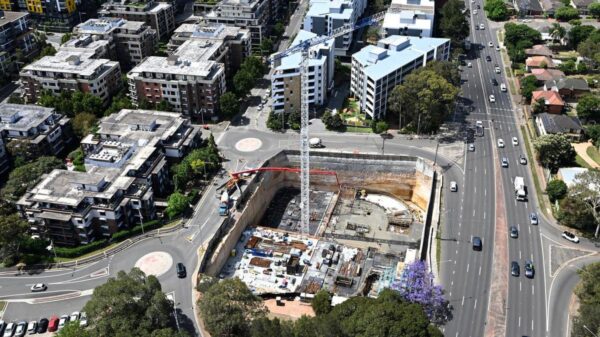In an innovative approach to education, Arthur Phillip High School in Parramatta, New South Wales, has redefined the traditional school experience. This high-rise institution, the first of its kind in the state, provides a distinct environment for students, who navigate a vertical campus rather than a sprawling one.
Founded to accommodate the growing population in Parramatta, the school stands as a testament to modern educational design. For Evelyn Tran, a Year 10 student, the transition from a conventional school to this unique setting was nothing short of monumental. “When I first walked in, it felt overwhelming,” she shared, recalling her first impressions at the age of 12. The building’s height and layout, along with the bustling movement of students, created a dynamic atmosphere reminiscent of a corporate office rather than a traditional school.
At Arthur Phillip, students begin their day by making their way to Parramatta station, whether by train, bus, or light rail. After a brief seven-minute walk, they arrive at the school’s gates, where a modern attendance system takes the place of a conventional roll call. Each student is issued a key card that they scan through a turnstile to officially mark their presence. This system ensures that parents receive instant notifications via SMS if their child is late or absent.
Stair Climbing Becomes a Daily Routine
Once through the gates, students face the literal challenge of climbing to their classrooms, which can involve ascending up to 10 flights of stairs. The school is structured so that each year group has a designated floor, with Year 10 students, like Evelyn, based on the sixth level. This layout not only fosters a sense of community within year groups but also adds an element of physical activity to the daily routine.
Evelyn noted, “It’s quite a workout every morning.” This unique aspect of the school experience merges fitness with education, promoting an active lifestyle for students who might otherwise spend their days sedentary.
The high-rise model is a response to urban density and aims to maximize the use of limited space in metropolitan areas. With advancements in architecture and design, schools like Arthur Phillip are paving the way for future educational facilities. The concept encourages a rethinking of how educational environments can adapt to modern challenges, such as overcrowding and the need for innovative teaching spaces.
In a rapidly evolving educational landscape, Arthur Phillip High School serves as a prime example of how schools can adapt to meet the needs of contemporary students, blending traditional learning with modern conveniences. As the school continues to grow, it will likely inspire further developments across Australia and beyond, shaping the future of education in urban settings.































































